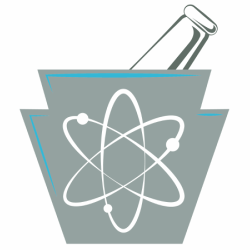Nonradioactive Adjuncts
Pharmaceutical |
Nuclear Medicine Indication |
Used in cerebral perfusion imaging to enhance the differentiation between areas of the brain supplied by normal vessels and those supplied by diseased vessels. It is indicated for patients with TIA, carotid artery disease, or stroke to determine the areas of the brain at risk of infarct and may be used for other conditions where cerebral perfusion is decreased. |
|
ACD (acid citrate dextrose) Solution |
Used in WBC-labeling studies as an anticoagulant during patient blood withdrawal. Recommended in Ceretec® package insert when preparing autologous leukocytes. |
Used in cardiac imaging as an alternative to treadmill stress in patients who are unable to exercise. Myocardial imaging with the injection of a radiopharmaceutical during stress can demonstrate the presence of myocardial ischemia. |
|
Used in myocardial perfusion stress tests to reverse adenosine-, dipyridamole-, or regadenoson-induced adverse reactions. |
|
Used as an adjunct in renal scintigraphy to evaluate renovascular hypertension. |
|
Used to enhance the visualization of ectopic gastric mucosa in a Meckel's diverticulum imaging study. |
|
Used in cardiac imaging as an alternative to treadmill stress in patients who are unable to exercise. Myocardial imaging with the injection of a radiopharmaceutical during stress can demonstrate the presence of myocardial ischemia. |
|
Used in cardiac imaging as an alternative to treadmill stress in patients who are unable to exercise. Myocardial imaging with the injection of a radiopharmaceutical during stress can demonstrate the presence of myocardial ischemia. |
|
Used as an adjunct in renal scintigraphy to evaluate renovascular hypertension. |
|
Used to confirm or rule out mechanical obstruction during renal scintigraphy when there is significant retention of radioactivity observed in the renal pelvis. Furosemide-induced diuresis causes fast emptying of a nonobstructed kidney, but it has minimal effect on a kidney that is obstructed. |
|
Used to enhance the visualization of ectopic gastric mucosa in a Meckel's diverticulum imaging study. |
|
Used in WBC-labeling studies as an anticoagulant during patient blood withdrawal. |
|
Used as an adjunct in WBC-labeling studies to enhance leukapheresis in patient's whole blood sample. Recommended in Drax Exametazime® package insert when preparing autologous leukocytes. |
|
Used in hepatobiliary imaging studies to aid in the diagnosis of acute cholecystitis when the bile activity is seen in the small bowel but not in the gallbladder. Morphine causes contraction of the Sphincter of Oddi, increasing bile duct pressure and causing diversion of the flow of bile into the gallbladder if the cystic duct is not blocked. In acute cholecystitis, the cystic duct will not fill even after the administration of morphine. |
|
Used in pediatric hepatobiliary studies to aid in the differentiation of neonatal jaundice and biliary atresia. Phenobarbital will enhance the excretion of hepatobiliary imaging agents in patients with cholestatic jaundice who have patent biliary ducts. In patients with biliary atresia, there will be no excretion into the small bowel. |
|
Potassium iodide (SSKI, Lugol's Solution, ThyroShield®) Product Comparison Table |
Used as a thyroid blocking agent when patient is exposed to radioactive iodine. Administration of thyroid blocking agents prior to receiving a dose of I-123, I-125, or I-131 radiopharmaceutical is recommended for studies in which accumulation of the radioisotope in the patient's thyroid is not desired. |
Potassium perchlorate |
Thyroid-blocking agent. Suggested as an alternative to potassium iodide in package inserts for I-123 MIBG and I-123 ioflupane. |
Used to enhance the visualization of ectopic gastric mucosa in a Meckel's diverticulum imaging study. |
|
Used in cardiac imaging as an alternative to treadmill stress in patients who are unable to exercise. Myocardial imaging with the injection of a radiopharmaceutical during stress can demonstrate the presence of myocardial ischemia. Product website |
|
Used to empty the gallbladder in patients whose gallbladder is full prior to starting a hepatobiliary study and to determine the gallbladder ejection fraction when the gallbladder has been visualized during the study. Product Website |
|
Increases serum TSH (thyroid-stimulating hormone) levels which increase the uptake of radioiodine in thyroid cancer cells. Product Website |
Many thanks to Ellen Bowen, PharmD Candidate 2024 for her work on this project.
Works Consulted and Additional Resources:
Park H-M, Duncan K. Nonradioactive pharmaceuticals in nuclear medicine. Journal of Nuclear Medicine Technology. 1994; 22:240-9
https://tech.snmjournals.org/content/22/4/240
Loveless VS. Adjunct agents used in nuclear medicine imaging: Nonradioactive pharmaceuticals. In: Smith BT, Weatherman KD, eds. Diagnostic Imaging for Pharmacists. Washington, DC: American Pharmacists Association; 2012: 147-171
Park H-M, Duncan K. Nonradioactive pharmaceuticals in nuclear medicine. Journal of Nuclear Medicine Technology. 1994; 22:240-9
https://tech.snmjournals.org/content/22/4/240
Loveless VS. Adjunct agents used in nuclear medicine imaging: Nonradioactive pharmaceuticals. In: Smith BT, Weatherman KD, eds. Diagnostic Imaging for Pharmacists. Washington, DC: American Pharmacists Association; 2012: 147-171
